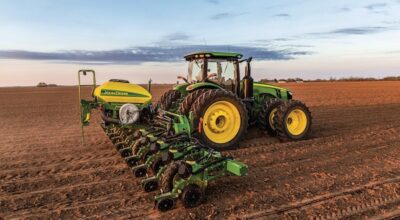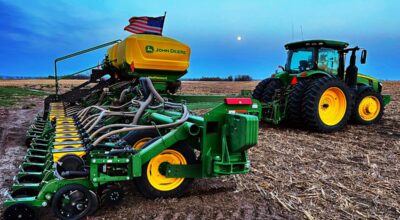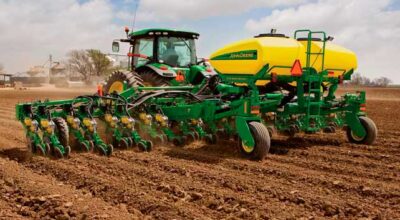Farmers everywhere know that in order to maximize yields, they must take the necessary steps before the planting season begins. While it can depend on weather conditions, it is typically best if crops like corn or soybeans are planted between April 15 and May 15. Every farmer is different, with each practicing various techniques to get their land where it needs to be for the current season and for seasons to come.
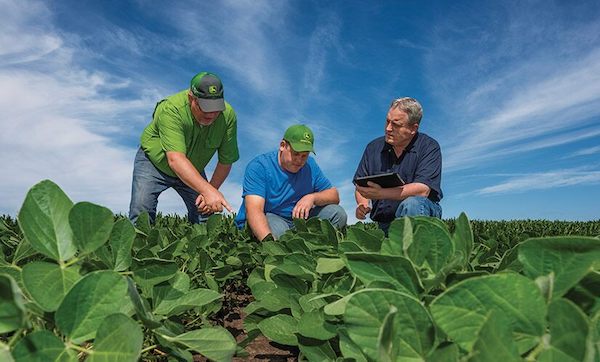
Before taking action, farmers should plan their next move carefully to ensure they are getting the most out of their field. Let’s take a look at some tips and considerations for how to effectively prepare for the planting season and achieve a successful harvest.
The Importance of Soil Testing
According to experts from the University of Nebraska-Lincoln’s Institute of Agriculture and Natural Resources, sampling soil in either the fall or spring can be critical in determining potassium, phosphorous, sulfur, micronutrient, and lime requirements. Taking this extra step will enable producers to play an active role in the optimization of crop production. When testing soil in their fields, producers should also consider the moisture line – this can help determine planting depth, something that can have a major impact on growth and seed to soil contact.
By testing soil early enough in the process, producers can take the appropriate action and make adjustments if necessary.
Prepare the Land for Planting
Another step that producers should consider before planting is some form of tillage or chemical “burn-down”. Doing this will help kill weeds in the seedbed that would crowd out the crop and steal much-needed moisture and nutrients. Producers everywhere know how much time and effort goes into a normal planting season; taking precautions to effectively prepare their fields will help reduce stress and kick off the planting season right.
While practices have shifted over time, farmers across the country typically employ one of three types of tilling when preparing their land. This includes conventional tillage, conservation tillage, and reduced tillage.
- Conventional: This method consists of using moldboard plows followed by several secondary tillage efforts and eventually relying upon mechanical cultivation once the crop is up.
- Conservation: This method allows for more than 30% of residue coverage to remain on the soil, helping to limit the negative effects that tilling can have on the land.
- Reduced: This method, which has become more popular in recent years, is accomplished using a chisel plow. Many producers rely on this practice, which includes keeping crop residue on the soil surface, as it can reduce erosion and conserve soil moisture.
While it has its benefits, producers should take care to consider the impact that frequent tillage has on their land, especially as they head into the planting season.
When You Do Till, Make Sure It’s Done Right
Since the creation of the first steel plow in 1837, John Deere has been committed to helping farmers handle daily tasks, such as preparing the land, with ease. In addition to making life easier for farmers, the company also prioritizes the quality and the health of the land that its machines are managing.
Today, the company offers a wide range of tillage equipment to help prepare for the growing season as efficiently as possible. This includes disks, plows, field cultivators, variable-intensity tillage tools, and more.
Additionally, producers can opt for TruSet™ Tillage technology, designed to help increase productivity in short tillage windows by making on-the-go depth and down-pressure adjustments from the cab – in only six seconds. To learn more about this John Deere technology, watch the video below.
https://www.youtube.com/watch?v=uV_XKhCmyJs
Take on Planting Season with Confidence
Although field prep is an important piece of the puzzle, it is just the beginning of a season of hard work. When it comes time to begin planting crops, there are certain things that producers should consider to maximize yields.
Reducing Seed Costs
When planting, it is important to only put seed where you want it to grow. While this may seem obvious, it can have a major impact on whether or not producers get to enjoy a successful harvest season. John Deere RowCommand is designed to manage seed output, reduce yield drag, and improve harvest capabilities on Pro-Series, MaxEmerge XP, and chain-driven MaxEmerge XP units.
Maintaining Consistent Depth Control
What does it take to protect yields and maintain consistent seed depth? Producers have to look no further than Deere’s active pneumatic downforce option, designed to make achieving desired planting accuracy much easier. Working alongside SeedStar, a hydraulic compressor automates downforce control. With the help of this technology, operators can worry less about making manual adjustments and instead focus on other planting factors, such as seed singulation and spacing.
Improving Singulation and Spacing
Producers know how important it is to retain steady seed spacing, even when their machine is changing speeds. With this in mind, it is important to utilize technology that senses this change and adjusts seed meters as necessary to deliver a consistent plant population. John Deere has a variety of options, including its Variable Rate Drive and Pro-Shaft drive row units, that are designed to help meet this goal and achieve a successful planting season.
Puncturing All Ground Conditions
Producers can install coulters on their John Deere planters in order to break through reduced tillage conditions without damaging their equipment. Pre-tilling the area will allow for a clear seed furrow and also enable easier closing of the seed furrow.
Monitoring and Documenting Performance
Producers can lessen seed costs and prevent overplanting with John Deere Section Control – this technology is compatible with GreenStar and can be set up to automatically turn sections or row units on or off. Additionally, by monitoring daily operations and general planting performance with SeedStar XP, producers can increase efficiency and precision throughout the planting season.
Improve Seed Placement, Spacing, and Emergence with Deere
When heading into the planting season, producers must consider how they are going to go about this process. While some may go with a planter, others may go with an air seeder. While on the topic, some may be wondering, “What is the difference between a seeder and a planter?”
An air seeder will volumetrically meter the product right below each tank, whereas a planter will singulate each seed right above the row. What each producer chooses will depend on one’s needs while out in the field. Now that the record has been set straight about these pieces of equipment, let’s take a look at what John Deere has to offer.
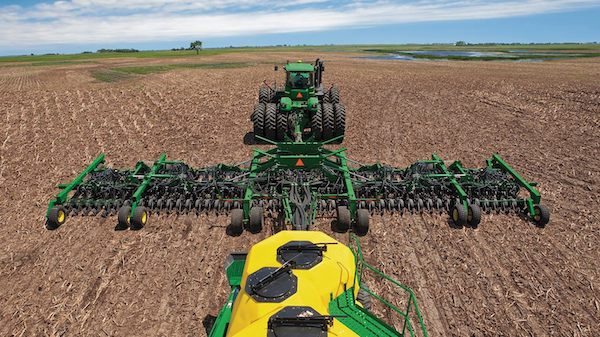
John Deere Planters
- Drawn planters: These planters are designed to cover more acres with flexibility and productivity, even in no-till situations.
- Mounted planters: Producers who are looking for an affordable option may consider these pieces of equipment as they are great for planting in conventional and reduced-till conditions.
- DB planters: For producers who manage large acres, this John Deere planter option may be the right fit.
- DR planters: These planters feature Stack-Fold technology, maximizing flexibility and overall productivity.
John Deere Seeders
- Air Drills: John Deere Air Drills, specifically the N500F and P500, are designed to handle tough no-till conditions with ease and provide consistent seeding rates from row to row.
- Box Drills: This option features productive seedbox capacities, allowing for longer intervals between refills.
- Commodity / Air Carts: Thanks to the John Deere ActiveCal system, calibration can be managed from the cab of the tractor, enabling producers to cover more ground each day.
Want to see how others get the most out of their John Deere planting equipment? Check out this media gallery that’s full of images and videos submitted by our fans!
Get Ready for Planting Season
While each farmer has his or her own way of managing their field, there is always room for further insight. By taking the appropriate steps prior to the planting season, producers will see improved yields and feel more confident in their accomplishments.
If you have any questions about John Deere tillage or planting equipment, you can contact your local John Deere dealer.
If you enjoyed this post or want to read others, feel free to connect with us on Facebook, Pinterest, or Twitter!
